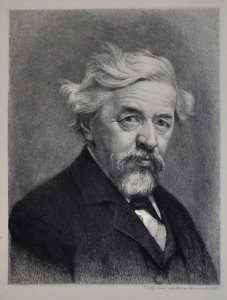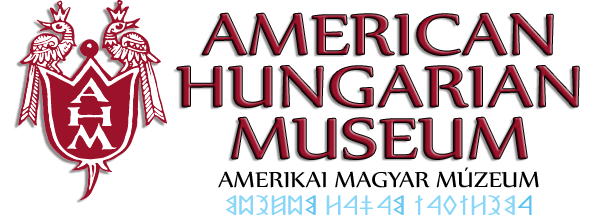JENŐ DOBY
1834-1907

Jenő Doby, copperplate engraver and painter, was born in the city of Kassa, North-Hungary (today Kosice) in 1834 and died at Portore in 1907. His father was a merchant, his mother was the sister of professor Imre Henszlmann (1813-1888), archeologist and art historian, who taught Doby to draw in his childhood. He learned the art of etching and engraving from Alajos Fuchsthaler of Pest, who was doing engravings for his uncle’s book at that time. In 1852 Doby went to Vienna to learn painting from Farkas Bőhm, whom he also accompanied to Rome, where he was copying the works of the old masters at different galleries. Going back to Kassa he did mainly portrait paintings. In 1855 he traveled to Paris, Rheims and London, and worked for a while at the Paris studio of Gleyre. Later, in 1862, he went back to Paris to work with Sondain, an engraver of architecture.
Until 1860 Doby mainly worked as a painter, but after that he turned to graphic art. He did engravings for the Hungarian Academy of Science, the Hungarian Archeological Society, the Central-Commission zur Erhaltung der Kunst und historischen Denkmale in Vienna, Flóris Rómer and Henszlmann. In 1867 he received a scholarship to engrave the large painting by Engerth, The Battle of Zenta located at the Royal Castle in Buda. During this time he learned to know Lajos Jacoby, professor of engraving at the Academy. At the request of Jacoby he moved to Vienna in 1869. In 1873 he was the supervisor of the Hungarian Art Exhibition at the World Fair held in Vienna. In 1973, after finishing The Battle of Zenta, he received another scholarship for his engraving of admiral Tegethof. In 1883 he moved back to Budapest.
In 1884, Doby was appointed professor of engraving at the Academy of Applied Arts in Budapest by Ágoston Trefort, minister of religion and education. He was commissioned to do various engravings for the Hungarian National Gallery, the Society of Fine Art, the Viennese Gesellschaft für Kunst and the Hungarian Government. He also engraved the portraits of famous personalities such as Ferenc Pulszky, Imre Henszlmann, Ágost Trefort, Count Gyula Andrássy and the king among others. There are 126 Doby engravings recorded in the book A magyar rézmetszés (Hungarian Copperplate Engraving), Budapest 1951, by Dénes Pataki. Several of his works are to be found at the Hungarian National Gallery. – Awards: 1894, Antwerp – “first class medal”; 1895, Paris – “mention honorable”; 1896, Budapest – “grand medal” at the exhibition celebrating 1000 years of Hungarian Statehood.
Besides being an outstanding artist, his greatest achievement was the education of several generations of graphic artists for the Hungarian art world.
Emese Kerkay
American Hungarian Museum, No. 64, 1999

All the artwork presented in the slideshow are from the collection of the American Hungarian Museum and were donated to the AHM by Jenő Doby’s granddaughter Klara Doby Benkovich in 1999.
